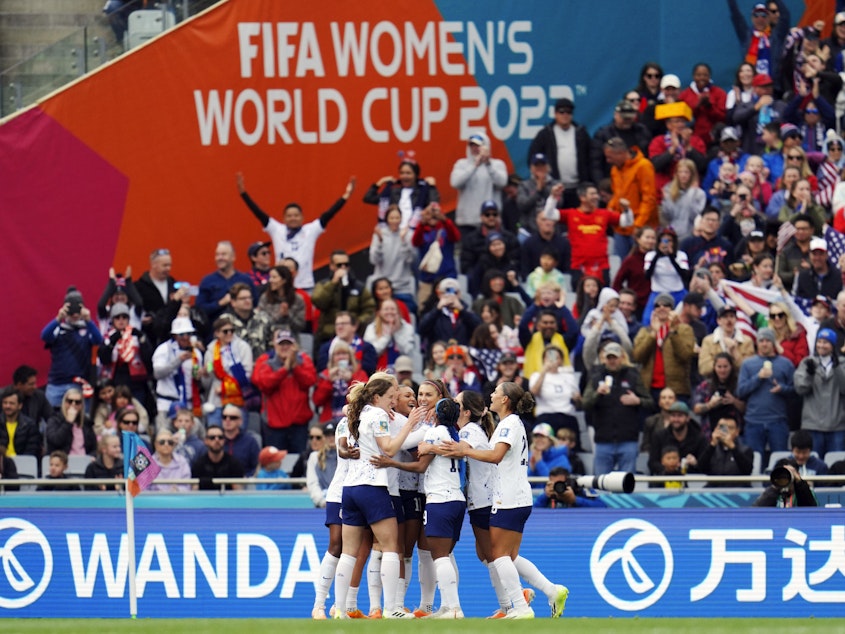It's not your imagination. Teams at the Women's World Cup are playing longer games

When the U.S. Women's National Team defeated Vietnam in its 2023 World Cup opener, the squad played a lot more than the typical 90 minutes.
They were on the field 22 extra minutes. And it's been common so far at this tournament. The Zambia-Japan match was 19 minutes longer. Colombia-South Korea exceeded regulation by 18 minutes and the Canada-Ireland match had 17 minutes of added time.
Referees have always added time to games. But these longer durations are a relatively new phenomenon which really came into view at the men's World Cup in Qatar last year. As we reported then, a typical soccer game is 90-minutes of regulation with two 45-minute halves. Unlike basketball or football, the referee keeps the time on the field and has wide latitude to add extra time as needed. But many matches didn't really reflect the full time that should have been added for injuries, goal celebrations and substitutions.
So FIFA, the international soccer federation, wanted its referees to be more accurate with the time on the field - to ensure that every minute that should have been played is not lost because of a game delay.
For more on FIFA's reasoning, here's our story from 2022 which you can read here. [Copyright 2023 NPR]

